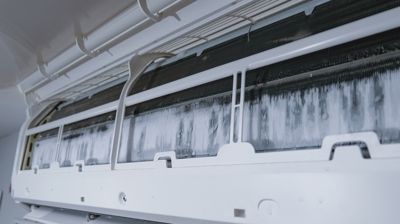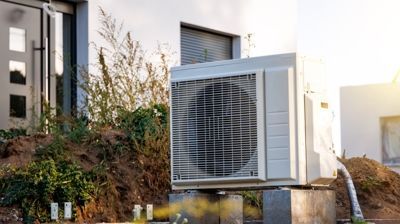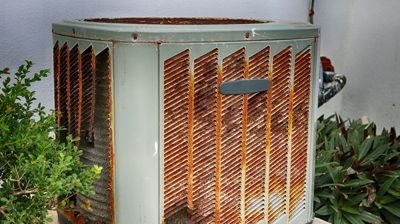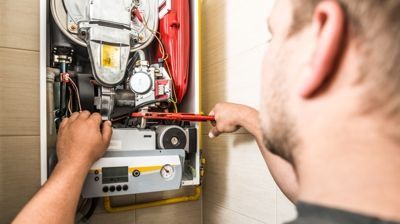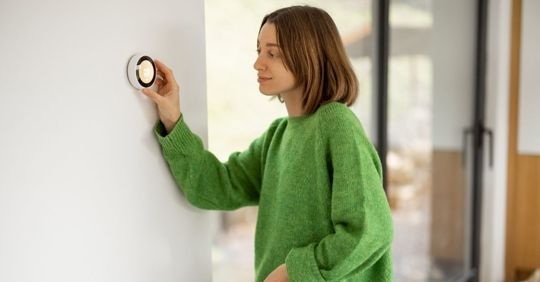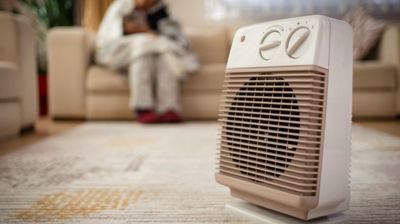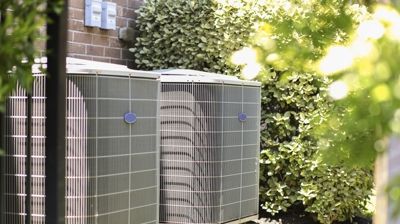Air Max HVAC Blog & Resource Library

August 1, 2024 | Air Max Heating, Air Conditioning and Refrigeration
Maximizing Home Efficiency to Reduce Summer Energy Costs
When the summer heat waves hit, the last thing you want is to be sweating over high energy bills. Enter the smart thermostat—a modern solution to maintaining your cool without breaking the bank. Smart thermostats go beyond basic temperature adjustments; they learn your schedule and preferences, making automatic tweaks to ensure your home is comfortable when you're there and conserving energy when you're not. The benefits of installing a smart thermostat are twofold: you can enjoy a consistently comfortable home environment and see a reduction in your energy bills. In fact, many homeowners report significant savings, with some devices paying for themselves within a year of installation.
Programming a smart thermostat is a breeze, and it's a step that can lead to substantial savings. By setting your thermostat to adjust the temperature when you're asleep or away, you can cut down on unnecessary cooling. Imagine your home automatically shifting to a more economical temperature setting during the workday and then transitioning back to your preferred comfort level just before you return. This kind of intelligent programming ensures that you're not wasting energy cooling an empty house, which can lead to a noticeable reduction in your summer energy expenses.
Sealing and Insulation Improvements
Another key player in the battle against rising energy costs is the integrity of your home's sealing and insulation. Cracks, gaps, and inadequate insulation can be the culprits behind your air conditioner working overtime. By sealing leaks around windows, doors, and other openings, you can keep the cool air where it belongs—inside your home. This not only helps maintain a comfortable temperature but also reduces the strain on your air conditioning system, leading to lower energy consumption and extended equipment life. Insulation improvements, particularly in attics and walls, act as a barrier against heat, keeping your living spaces cool and your energy bills in check.
It's not just about plugging up the obvious leaks; it's about creating a comprehensive seal throughout your home. This might involve weather-stripping, caulking, or even adding insulation to key areas. The goal is to create a consistent thermal envelope that minimizes the exchange of heat between the interior and exterior of your home. When done correctly, these improvements can have a dramatic effect on your energy costs, with some homeowners seeing savings of up to 20% on their cooling bills. It's an investment that not only pays off in the summer but also provides year-round benefits by keeping your home warmer in the winter.
Air Conditioner Maintenance
As the backbone of your summer comfort, your air conditioning unit deserves regular TLC to keep it humming smoothly. Basic maintenance, such as cleaning or replacing filters, can have a significant impact on your AC's efficiency. A dirty filter restricts airflow and forces the system to work harder, which can lead to increased energy use and higher bills. Servicing your AC unit, including checking refrigerant levels and ensuring the coils are clean, will help it run at peak efficiency. Regular maintenance not only improves performance but also extends the lifespan of your unit, saving you money on potential repairs or early replacement costs.
Don't overlook the importance of a professional tune-up. A qualified technician from Air Max Heating, Air Conditioning and Refrigeration can perform a thorough inspection and service of your system. They'll identify any issues that could be hindering performance and suggest solutions to optimize efficiency. This proactive approach can prevent small problems from becoming big, expensive ones and ensure that your AC is ready to tackle the summer heat with ease. Plus, a well-maintained system is less likely to break down when you need it most, providing peace of mind along with cost savings.
Natural Ventilation Techniques
Embracing natural ventilation is a simple yet effective way to enhance your home's airflow without relying solely on air conditioning. Strategic use of windows, shades, and fans can create a cross-breeze that cools your living spaces naturally. Opening windows on opposite sides of the house during cooler parts of the day can flush out stale, warm air and draw in fresh, cool air. Pairing this with properly angled window shades can block out the hot sun while still allowing for ventilation. Additionally, using ceiling or portable fans to circulate air can make a room feel several degrees cooler, reducing the need to lower the thermostat.
It's all about timing and positioning when it comes to natural ventilation. For instance, opening windows in the early morning or late evening when the outside air is cooler can help lower indoor temperatures. During the day, using shades or blinds to prevent direct sunlight from warming up your home can make a big difference. And remember, fans cool people, not rooms, so turn them off when you leave to save energy. By mastering these natural ventilation techniques, you can enjoy a fresh breeze and a lighter energy bill, all while giving your air conditioner a well-deserved break.
Landscaping for Energy Savings
Believe it or not, the right landscaping can be your ally in reducing energy costs. Strategic planting of trees, shrubs, and vines can provide natural shade to your home, significantly lowering indoor temperatures and reducing the need for air conditioning. Deciduous trees, which lose their leaves in the fall, are particularly effective as they provide shade in the summer while allowing sunlight to warm your home in the winter. By planting these trees on the south and west sides of your property, you can block the most intense sun rays during the hottest parts of the day. This green approach to energy savings is not only effective but also adds beauty and value to your property.
When considering landscaping for energy savings, it's important to plan for the long term. Trees and shrubs take time to grow, so while the benefits may not be immediate, they are substantial over the years. Vines can be a quicker solution, as they grow rapidly and can be trained over trellises or pergolas to create shaded areas. Additionally, ground cover plants can help cool the air around your home by reducing the heat reflected off the ground. With thoughtful landscaping, you can create an outdoor oasis that not only enhances your home's curb appeal but also contributes to a cooler, more energy-efficient living environment.
Window Treatments and Glazing Options
Window treatments are more than just decorative; they're functional tools in the fight against summer heat. Reflective films, blinds, and drapes can significantly prevent heat gain through your windows, which is a major contributor to rising indoor temperatures. Reflective films are particularly effective, as they can block a substantial amount of solar radiation while still allowing natural light to enter the room. Blinds and drapes offer flexibility, as they can be adjusted throughout the day to control light and heat. By choosing window treatments with a high reflective value or insulation properties, you can keep your home cooler and reduce the burden on your air conditioning system.
For those looking to invest in long-term solutions, upgrading to energy-efficient windows with low-emissivity (low-E) glazing is a smart move. Low-E windows have a thin coating that reflects infrared light, keeping heat out during the summer and in during the winter. While the initial cost may be higher, the energy savings over time can be significant, making it a worthwhile investment for those planning to stay in their homes for years to come. Whether you opt for simple window treatments or more advanced glazing options, controlling sunlight is a key strategy in maintaining a comfortable and cost-effective home during the summer months.
Energy-Efficient Appliance Selection
Appliances are the workhorses of our homes, but they can also be major energy hogs, especially during peak summer hours. Choosing energy-efficient appliances is a critical step toward reducing your energy footprint and your bills. Look for the ENERGY STAR label when shopping for new appliances; this label indicates that the product meets strict energy efficiency guidelines set by the U.S. Environmental Protection Agency. Energy-efficient appliances use advanced technologies to deliver the same performance while using less energy, which can lead to significant savings over the lifespan of the appliance. From refrigerators to washing machines, every energy-smart choice contributes to a lower energy bill.
Using your appliances wisely can also make a difference. For example, running your dishwasher or doing laundry during off-peak hours can reduce strain on the power grid and often cost less, depending on your utility's rate structure. Additionally, consider air-drying dishes and clothing when possible to save even more energy. Small changes in how and when you use your appliances can add up to big savings, making energy-efficient appliance selection and usage a smart strategy for any homeowner looking to cut down on summer energy costs.
LED Lighting Solutions
Lighting can account for a significant portion of home energy use, but it's also one of the easiest areas to improve efficiency. LED bulbs are the clear winner when it comes to energy-saving lighting solutions. They use at least 75% less energy and last 25 times longer than traditional incandescent bulbs, according to the U.S. Department of Energy. This means fewer bulb replacements and lower energy bills. LEDs also emit less heat than other bulbs, which can help keep your home cooler. With a wide range of colors and brightness levels available, switching to LED lighting doesn't mean sacrificing ambiance for efficiency.
Reducing lighting costs goes beyond just swapping out bulbs. Being mindful of when and where you use lighting can also contribute to energy savings. Take advantage of natural daylight as much as possible and remember to turn off lights when they're not needed. Installing dimmers, timers, or motion sensors can help automate this process, ensuring lights are used only when necessary. By embracing LED lighting solutions and smart usage habits, you can enjoy a well-lit home without the high energy costs typically associated with keeping the lights on.
Daily Habits to Lower Electricity Use
Simple daily habits can have a surprisingly powerful impact on your electricity use. For instance, unplugging devices when they're not in use can prevent phantom loads—the energy consumed by electronics even when they're turned off. Adjusting your computer and TV settings to energy-saving modes, taking shorter showers, and using a microwave instead of an oven for small meals are all small changes that can lead to significant savings. It's about being conscious of the energy we use and making small adjustments that, collectively, can lower our utility bills without compromising on comfort or convenience.
Another habit to adopt is being strategic with your thermostat settings. Setting your thermostat a few degrees higher when you're not home can reduce your cooling costs without affecting your comfort. Encouraging family members to be mindful of energy use, like turning off lights and taking advantage of cooler evening air, can also contribute to a culture of conservation in your home. By incorporating these simple behavioral changes into your daily routine, you can take control of your energy consumption and see a noticeable difference in your summer energy costs.
Monitoring and Reducing Peak Time Energy Consumption
Understanding and reducing your peak time energy consumption can lead to substantial savings on your utility bills. Many utility companies charge higher rates during peak hours—typically in the late afternoon and early evening—when demand is highest. By monitoring your energy usage and shifting high-energy activities to off-peak times, you can avoid these peak demand charges. Smart meters and home energy monitors can provide real-time data on your energy consumption, helping you identify patterns and make informed decisions about when to use certain appliances or systems.
For homeowners, being aware of local peak times and adjusting energy usage accordingly can make a big difference. Consider running your dishwasher or doing laundry early in the morning or late at night. Pre-cooling your home in the early hours and then allowing the temperature to rise slightly during peak times can also help. By staying informed and proactive about your energy usage, you can navigate the peaks and valleys of energy costs with confidence, keeping your bills as low as the Minnesota winter temperatures.
Contact Air Max Heating, Air Conditioning and Refrigeration
Reducing your summer energy costs doesn't have to be a daunting task. With the right strategies and a little help from the experts at Air Max Heating, Air Conditioning and Refrigeration, you can enjoy a comfortable home and lower utility bills. Whether you're interested in smart thermostat installation, AC maintenance, or energy-efficient upgrades, our team or HVAC service experts is ready to assist you. We are committed to helping you maximize your home's efficiency.
Contact us online or call (320) 252-5602 to learn how we can support your energy-saving goals and keep your home cool and comfortable all summer long.
